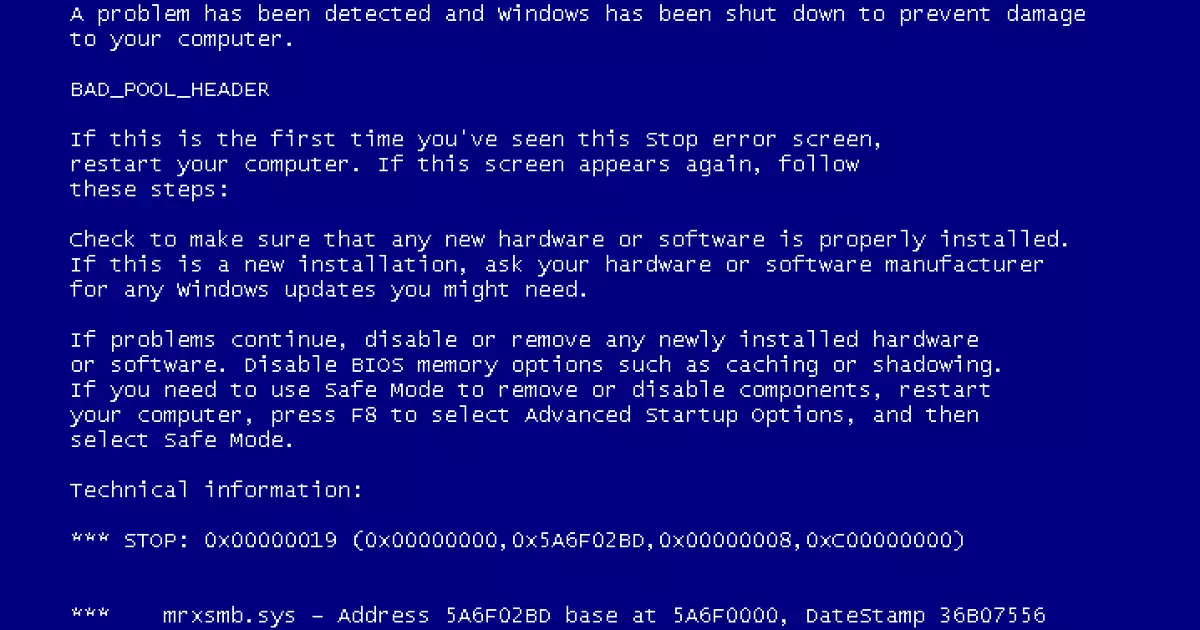In recent discussions about technology and community experiences, one vivid memory from the UK’s Reading music festival seems most relevant: the collective shout of “bollocks” echoing through the grounds as campers—the epitome of camaraderie and shared experiences—shared their frustrations. This phenomenon, reminiscent of a Mexican wave, creates a unique bond among participants as they simultaneously acknowledge the absurdities of life. In a digital age where we seek connection in the most unexpected places, these chaotic yet harmonious moments provide a backdrop to our understanding of technology and its inherent flaws, exemplified by the infamous Windows Blue Screen of Death.
Interestingly, the recent headlines describing the Blue Screen of Death (BSOD) as “iconic” reveal a tendency to mythologize shared struggles in our tech-laden lives. Once a source of extreme annoyance, the BSOD has ascended to a status akin to that of a shared urban legend, representing a collective setback we have all encountered at some point on our computing journeys. In this light, it’s almost poetic that Microsoft has made moves to phase out this once-iconic symbol of distress, replacing it with a less emotionally charged Black Screen of Death (BlackSOD).
A Shift to the Black Screen and The Quest for Clarity
Microsoft’s recent announcement regarding the redesign of the BSOD catalyzed another wave of discussion, one bolstered by David Weston, the company’s Vice President of enterprise and OS security. According to Weston, the intention behind adopting the BlackSOD is to provide “cleaner information” that helps users quickly diagnose and solve problems. It’s a reasonable goal, aligning with the need for greater clarity in a world inundated with tech miscommunications. However, one must ponder: what’s lost in this effort to sanitize experiences that were once so palpable and relatable?
For over 40 years, the BSOD has held a role not just as a digital notification—an alert that something has gone wrong—but as a cultural artifact that reflects our frustrations with technology. The BSOD moment, often punctuated by a wry smile or an exasperated sigh, has connected generations. Just as fans of vintage video games recall the haunting red ring of death of the Xbox 360, the BSOD has ingratiated itself into our collective memory as both fear and foolish pride. The loss of this shared experience may not be as detrimental as other pressing issues in the tech landscape, but it does signify a departure from the chaotic, human side of computer failures.
Technology’s Strange Marriage with Modern Militarization
Moreover, Microsoft’s recent dealings with military technology—specifically its supply of artificial intelligence to the Israeli military—reflect a disconcerting juxtaposition of their public persona versus the realities of the tech ecosystem. Coupled with their vast financial profits and mass layoffs, these developments draw attention away from their innovative capacity while revealing an unsettling trend where corporations utilize innovation for purposes that are ethically questionable.
The company, important as it may be in shaping modern experience, finds itself like a distressed child pondering its identity amidst a world dominated by military contracts and profitability. This narrative, tangled in the dynamics of power, displays capitalism’s duality—while technology breeds connection and communal experiences, it also fosters a landscape where machines wield influence over humanity’s tumultuous tendencies.
The Future of Digital Frustration
In light of these poignant issues, one must reflect on where we stand in our relationship with digital disruption and storytelling. Technology isn’t merely a tool; it’s entwined with our very cultural fabric. There’s a genuine nostalgia when we think of collective experiences attached to failures, represented by the BSOD.
As we tread forward into a future potentially devoid of such icons, we may find ourselves yearning for authentic expressions of frustration, humor, and corporate critique. Perhaps there are parallels to draw from those charged festival nights; ultimately, it’s in our human response to setbacks—whether shared cries of “bollocks” or communal laughter—that we find solace, even amidst our digital breakdowns. The farewell to the BSOD offers an opportunity to reconsider the way we interact with technology and narrate our experiences within it. It keeps us grounded, reminding us of our humanity in a largely digital world.

